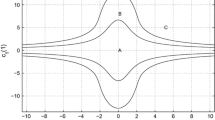Overview
- Authors:
-
-
György Terdik
-
Center for Informatics and Computing, Kossuth University of Debrecen, Debrecen 4010, Hungary
Access this book
Other ways to access
About this book
"Ninety percent of inspiration is perspiration. " [31] The Wiener approach to nonlinear stochastic systems [146] permits the representation of single-valued systems with memory for which a small per turbation of the input produces a small perturbation of the output. The Wiener functional series representation contains many transfer functions to describe entirely the input-output connections. Although, theoretically, these representations are elegant, in practice it is not feasible to estimate all the finite-order transfer functions (or the kernels) from a finite sam ple. One of the most important classes of stochastic systems, especially from a statistical point of view, is the case when all the transfer functions are determined by finitely many parameters. Therefore, one has to seek a finite-parameter nonlinear model which can adequately represent non linearity in a series. Among the special classes of nonlinear models that have been studied are the bilinear processes, which have found applica tions both in econometrics and control theory; see, for example, Granger and Andersen [43] and Ruberti, et al. [4]. These bilinear processes are de fined to be linear in both input and output only, when either the input or output are fixed. The bilinear model was introduced by Granger and Andersen [43] and Subba Rao [118], [119]. Terdik [126] gave the solution of xii a lower triangular bilinear model in terms of multiple Wiener-It(') integrals and gave a sufficient condition for the second order stationarity. An impor tant.
Similar content being viewed by others
Article
08 September 2023
Table of contents (6 chapters)
-
-
-
-
-
-
-
-
Back Matter
Pages 211-260
Authors and Affiliations
-
Center for Informatics and Computing, Kossuth University of Debrecen, Debrecen 4010, Hungary
György Terdik




